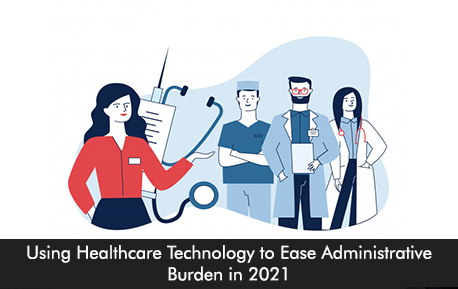Hospitals and healthcare providers deal with a lot of unnecessary and excessive administrative burdens which can result in reduced patient care and lower patient outcome levels. National data reveals that 50% of the medical workforce and staff members are burned out which is due to the administrative burden which also increases healthcare costs. Too many administrative tasks divert the provider’s attention and time from focusing on the patient. Fortunately, Electronic Medical Records (EMR) Software solutions have helped to streamline and automate manual administrative tasks, which has facilitated providers to enhance the overall care process by focusing on their patients and chronic healthcare conditions. A framework should be established by healthcare organizations to find out the root cause of administrative burdens. It is reported that Americans spend $9,700 yearly on healthcare. Of that sum, an estimated $720 goes to administrative costs these include billing errors.
Using healthcare technology tools to reduce administrative strain in your practice
- Leveraging Artificial Intelligence (AI) to streamline administrative tasks – AI technology can be used by hospital systems and healthcare organizations to automate financial bills and claims to process. Financial tasks can put a strain on providers, when robotic process automation is used then practices can eliminate unnecessary procedures and also reduce costs.
- EMR software functionalities – EMR software systems offer ease of use and the right functionalities for medical practices of all sizes to streamline administrative, financial, and clinical tasks. Patient data and medical histories are stored electronically which can be used promptly and efficiently for best patient treatment. Tools such as the patient portal platform allow patients to book online appointments and the reminders alert feature automatically sends appointment alerts to patients through emails and messages which eliminates the pressure off staff members to make reminder phone calls to patients.
- The use of healthcare apps mobile apps by providers – Robust mobile apps facilitate healthcare providers by providing them with relevant medical resources and literature in the palm of their hand which enhances patient care. There are also administrative apps for providers which facilitate them to operate more efficiently. For example, an app tagged as HanDBase tracks and monitors the patient’s diagnosis and all financial billing and insurance details and information.
- Using revenue cycle management products to combat administrative burden – A Revenue Cycle Management (RCM) Software system helps to improve financial procedures to reduce billing errors and handle end-to-end claims processing. A successful RCM solution helps to maintain the financial stability of practice by ensuring proper reimbursement from Medicare patients and offer opportunities to review any revenue shortfalls.
Final Takeaway –
The administrative burden is one of the major issues in the US healthcare sector. Thankfully, in the age of technology and digital tools hospitals can reduce their burden easily however this isn’t an overnight solution but requires providers to educate staff members and everyone in their practice about the benefits of embracing technological tools to improve the medical care of patients in the hospital. Automating workflows is a sensible way to give medical organizations efficiency in improving healthcare services and also reducing costs.







